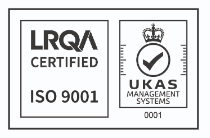
AcrossLimits Ltd and FELTOM (Federation of English Language Teaching Organisations Malta) are pleased to announce the signing of a Memorandum of Understanding (MoU) on the 11th September 2024. This initiative marks the beginning of a strategic partnership aimed at driving collaboration, innovation and growth within the English language education sector.
FELTOM is dedicated to maintaining high-quality standards and promoting Malta as a premier destination for English language learning. Through this partnership with AcrossLimits, FELTOM aims to secure the resources needed to strengthen its services and drive future growth.
AcrossLimits is a leader in securing EU-funded projects whilst implementing innovative technology solutions, and will assist FELTOM in identifying and applying for European funding opportunities aimed at improving services, increasing capabilities and enhancing the overall competitiveness of the English language teaching sector in Malta and beyond.
Jessica Rees-Jones, CEO of FELTOM, commented: “‘It was a pleasure meeting with Angele and the AcrossLimits team as we unpacked the opportunities ahead. We also explored our shared vision for the future and our inclusive approach with the balance of our respective strengths. Together, we reaffirmed our commitment to excellence in language teaching and to fostering an environment where our shared focus can be of mutual positive and constructive benefits. We believe that this will bring a new era of growth and opportunity to our members and stakeholders with FELTOM and are excited to partner with AcrossLimits.”
“We are excited to partner with FELTOM and bring our expertise in EU funding to support their mission of advancing Malta’s English language teaching sector. This MoU represents a shared commitment to innovation, growth, and the continuous improvement of services offered by FELTOM,” said Angele Giuliano, Managing Director at AcrossLimits Ltd.
About AcrossLimits Ltd
What began as a small software development company has blossomed into a leading creative technology and communications firm. Over the last 20+ years, AcrossLimits has proudly participated in over 90 successful EU projects, empowering numerous organisations across academia, industry, and the public sector to navigate the world of European funding opportunities. The AcrossLimits team of talented employees and a network of over 50 experts contribute to the company mission of driving innovation and collaboration across Europe.
Find out more here www.acrosslimits.com.
About FELTOM
Experience linguistic excellence through affiliation with the dynamic Federation of English Language Teaching Organisations Malta (FELTOM). Over the past 35 years, FELTOM has consistently led the evolution of language learning.
As a self-regulating nonprofit, we are devoted to elevating professionalism in English language education. Our primary goal is to establish and uphold unparalleled standards across all aspects of language immersion. Choosing a FELTOM-affiliated
institution ensures a journey of remarkable linguistic significance. Our dedicated team is committed to individual growth and achievement. FELTOM has pioneered ethics codes and nationally recognised service criteria. We ensure exceptional experiences and safeguard professional standing through diligent benchmark adherence.
Find out more here www.feltom.com.
Contact persons
Senfer Usman
Head of Partnerships at AcrossLimits Ltd
[email protected]
Jessica Rees-Jones
CEO at FELTOM
[email protected]



